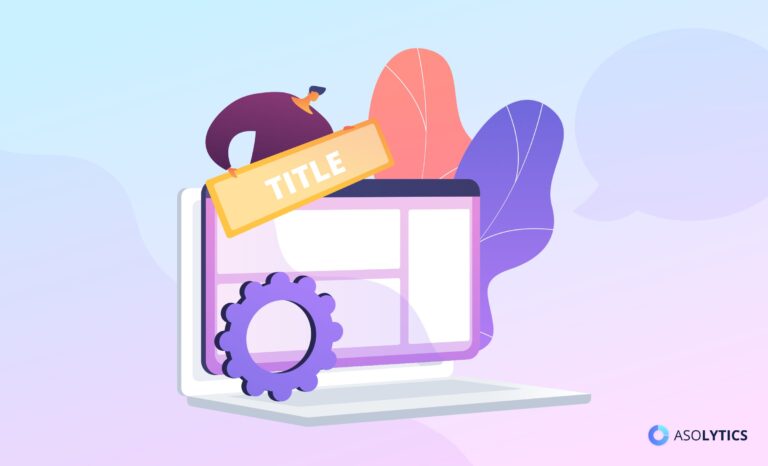ASO is a complex technique for promoting games and applications in different app stores. The key to effective content optimization is understanding how each platform works. For your activities to contribute to increasing product visibility, you should know what factors affect store ranking.
Although there are quite a lot of mobile app stores now, the largest of them are App Store and Google Store. They are followed by less popular services from Windows and Amazon. To successfully promote your product on each platform, you should carefully study the factors that affect the ranking. In our Asolytics ASO Academy, we look at the first two stores, as they are the first to bring you income. Also, we provide detailed information about ASO vocabulary for users and specialists.
In this article, we’ll take a deep dive into the nuances of how the App Store algorithms work, how to influence them, and how to market an iOS app. When studying the material, keep in mind that the company does not publicly disclose the basic principles of how its ranking system works. Much of what is currently known is derived from experiments, and any changes to your content require extensive testing.
Table of Contents
Assets Affecting Ranking
In ASO terminology, there is on- and off-metadata. It includes a URL, subtitle, description, promo text, icon, keywords, developer and app names, and screenshots. You can influence these parameters directly. The number of installs, reviews, and ratings belongs to the second group, and they can only be affected indirectly.
Some ASO factors from both categories have an impact on how your app ranks on the store:
- localized page;
- app name and URL;
- ratings and reviews;
- subtitle;
- keywords;
- in-app purchases;
- updates;
- installs.
How Ranking App Algorithm Works on App Store
Although Google Play and App Store are visually and in many ways similar to each other, they use different systems for analysis, ranking, and indexing. Below is a quick App Store optimization guide and methods of influencing its internal tools to bring your item to the top. Also, be sure to read our article about ASO ASO Ranking Factors to get comprehensive info.
Name
The name of your product is the most significant of all factors. It has the biggest impact on where it ranks in the SERPs. That is why, according to the recommendation of the App Store developers, name generation should be approached with the utmost care. It needs to be unique, no longer than 30 characters, and include a relevant keyword. Here it will have the most weight for internal search engines. The name should reflect the essence of your application, be short, memorable, and attractive to users. To be sure you know how to create appealing app title, check out our App Title and Subtitle: The Complete ASO Manual.
Subtitle
You have 30 characters to write a subtitle. This asset is also one of the most important ranking factors, so it should contain the second most relevant keyword. All users see it, and therefore it should be of high quality. With the help of a subtitle, you can tell a little more about your product. This part is ranked by systems weaker than titles but stronger than keyword fields.
Keyword field
Working with iOS app keywords is very different from Google Store. Here you have a small field of 100 characters where you need to fit the most relevant keys. Keep in mind that this store does not have such powerful search tools as Google, and therefore does not take into account service words, is unable to pick synonyms, and does not distinguish word forms. If you have multiple similar keywords, you need to list them all (synonyms, plural forms, etc.). Of course, 100 characters are not enough to mention all the terms; pick their most relevant forms and list them separated by commas (no spaces).
Also, keep in mind that you don’t need to use the same keyword in several places when doing iOS app store optimization. Internal index algorithms will only take into account the mention that has the highest weight. Don’t write phrases consisting of more than two words. The store’s tools identify single words and combine them as they see fit. The total number of combinations can reach tens of thousands. In general, the system does not work well with structures longer than three words; the best size is one or two ones.
The text in the keywords field is not visible to users, so some developers try to include the names of major competing brands. It can really lift the product in the search results, but you’ll be blocked if moderators find that you have gone for such a trick. Choose relevant keywords carefully because you can only change metadata on App Store when you upgrade the product. To edit only a keyword, an iOS app update is unacceptable; you should make significant changes to the item itself.
In-app purchases
In-app purchases (IAP) are another way to increase the visibility of your product. On App Store, you can add up to 20 different options: subscription, extra game levels, cosmetic items, service, and more. Each IAP is displayed in the search results and has its own name (30 characters), description (45 characters), and an icon. Use them to embed relevant keywords.
Localization
Localizing the app page and the app itself is a sure way to conquer new markets. App Store has a concept of primary and secondary localization. For example, American English and Spanish are used in the USA. Depending on the language settings on users’ devices, they may see different pages with different metadata. Indexing algorithms use information from both the main and additional app localization. Before launching the product, find out which locales are used in a region and adapt accordingly.
User actions
The high number of downloads and launches indicates your application quality. If the product is in demand by users, App Store’s internal algorithms will determine it as popular and show it more often. The more traffic your product gets from various sources, and the more per keyword installs, the higher it will rank for search queries. Deleting a product from devices does not strongly affect your condition as in Google Play.
Rating and reviews
The number of reviews on App Store affects the position in the search results. However, unlike Google Play, their texts are not indexed. Ratings have a positive effect on conversions, which in turn increases product visibility. If you ask your customers for feedback, it will be a big boost when paired with the right Apple Store search optimization tool. The app will rank higher for search queries. As practice shows, even ten reviews on a new item can raise it a hundred lines higher.
Updates
Constantly making changes to your product indicates that you regularly work on improvement. Right after the update release, the application will rise a few lines higher. Along with the update, you can adjust the metadata on the app page. By the way, on App Store, you can see the results of indexing the very next day after the renewal.

iOS ASO Features
We have detailed the features of each asset on the App Store page.
When optimizing content, keep in mind that the algorithms are closed, and there are probably other factors that are taken into account by internal ranking tools. — Asolytics Team
What is clear is that Google Play uses more sophisticated solutions than Apple. So, for example, search results on App Store are not personalized.
You can influence the ranking not only directly with the help of metadata but also by working with customers, providing quality service, and promptly responding to negative reviews. You should also take into account the current app store optimization trends and regularly check for updates in the work of the algorithms. For example, App Store now blocks apps related to the coronavirus epidemic. Only official organizations can post such products on this platform.
We didn’t mention a description in the article because, unlike Google Play, its content is not indexed. However, it can have an indirect effect on the conversion rate. It is one of those parameters that creates an excellent first impression of your product, so the text should be of high quality and tell about the uniqueness of the application. Icons, screenshots, and promo videos are used for the same purposes. The description should not exceed 4000 characters and should not include tags or HTML links.
By the way, Apple Spotlight branded search can help you increase customer engagement, the regularity of using your product, and other app statistics. As a developer, you can use it to, for example, help subscribers find files within your app. One of the helpful features of Spotlight is reminders. Clients will use your service more often when receiving regular information from a system. The higher the engagement rate, the higher your ranking position.
Make App Store Ranking Work for You
Your ASO strategy should take into account the characteristics of each platform, category, and market to be successful. In the case of App Store, ranking is primarily influenced by such on-metadata as the app name, subtitle, App Store localization, and a set of keywords. However, reviews and ratings are also considered by algorithms when compiling the list. By constantly improving the product and optimizing on-metadata, you indirectly influence off-metadata and help promote your game or app on App Store.
Now you know how to rank in App Store. We hope these tips will help you develop an effective ASO strategy and understand the mistakes you may have made in the past. Adapt to the conditions of a particular platform that your product has risen to a higher position. It will also positively affect the conversion to install rate. However, keep in mind that your strategy should be flexible and fluid throughout the whole life cycle of your product. You should constantly monitor mobile game industry trends and adjust your actions to maintain a consistently high ranking.




